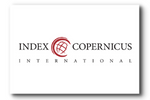Perception of the concept of arithmetic average of pedagogy students in a public university
DOI:
https://doi.org/10.5281/zenodo.7846262Keywords:
Statistic, Arithmetic average, Pedagogy, ProbabilityAbstract
This investigation aims at statistics and probability as a mathematical science, in order to investigate the concept of arithmetic mean conceived by students of the Pedagogy course at the State University of Maranhão, Bacabal campus. The methodological path consists of bibliographical research involving the study area. Based on responding to the objective of understanding the pre-formed concept of the students regarding statistics and probability, the technique of the semi-open questionnaire was used to apprehend the object of study, with 20 duly enrolled participants. After analyzing the collected data, the research reveals that, in the students' opinion, Basic Education mathematics teachers still work with statistics contents in the same way they teach other mathematics contents and that the prevailing methodology is the traditional one.
Downloads
References
BARRETO VILLANUEVA, Adán El progreso de la Estadística y su utilidad en la evaluación del desarrollo Papeles de Población. Universidad Autónoma del Estado de México, vol. 18, núm. 73. Toluca, México, 2012.
BATANERO, C. Significado y Comprensión de las Medidas de Posición Central Departamento de Didáctica de la Matemática, Universidad de Granada UNO, 2000, 25, 41-58
BAUER, Martin W.; GASKELL, George (ed.). Pesquisa qualitativa com texto, imagem e som: um manual prático. Petrópolis: Vozes, 2003.
BRANDÃO, J. B. R. A importância do conhecimento tecnológico na formação do professor de matemática. In: ARAÚJO FILHO, P. M.; NERES, R. L.; MARTINS, E. R.; BRANDÃO, R. J. B. (Orgs.). Coletânea Educação 4.0: Tecnologias Educacionais. São Luís: Editora Pascal, 2020a.
BRANDÃO, R. J. B. Estatística e Probabilidade na formação do Engenheiro Civil. In.: PINHEIRO, Eduardo Mendonça.; COELHO, Glauber Tulio Fonseca.; ARAÚJO FILHO, Patrício Moreira de. (Org.). Engenharia 4.0: a era da produção inteligente-São Luís: Editora Pascal LTDA, 2020.b
BRANDÃO, R. J. B. Formação do professor de Matemática no Centro de Estudos Superiores de Bacabal/UEMA para o ensino de estatística. Tese de Doutorado. Universidade de São Paulo (UNIBAN). São Paulo - SP, 2012.
BRASIL. Base Nacional Comum Curricular – BNCC. Educação é a Base. Ministério da Educação. Brasília: MEC, 2018. Disponível em: < http://basenacionalcomum.mec.gov.br/images/BNCC_EI_EF_110518_versaofinal_site. pdf >. Acesso em: 17. fev. 2023.
CANAL, Sergio Yañez. La estadística una ciencia del siglo XX. R.A. Fisher: El Genio. Revista Colombiana de Estadística, v. 23, n. 2, p. 1–14, 2000.
CRESPO, Antônio Arnot. Estatística fácilI. 17. ed. São Paulo: Saraiva, 2002.
CRESPO, Antônio Arnot. Estatística fácilI. 20. ed. São Paulo: Saraiva, 2009.
GARNICA, A. V. M. História Oral e educação Matemática. In: BORBA, M. C.; ARAÚJO, J. L. (Org.) Pesquisa Qualitativa em Educação Matemática. Belo Horizonte: Autêntica, 2004.
LOPES, C.E. O ensino da estatística e da probabilidade na educação básica e a formação dos professores. Cad. Cedes, Campinas, vol. 28, n. 74, p. 57-73, jan./abr. 2008.
MEDEIROS, C. A. Ministério da Educação. Secretaria de Educação Profissional e Tecnológica. 4ª. ed. atualizada e revisada- Cuiabá: Universidade Federal de Mato Grosso / Rede e-Tec Brasil, 2013.
MORETTIN, P. A. BUSSAB, W. O. Estatística Básica. 6. ed. - São Paulo: Saraiva, 2010.
PONTES, Márcio Matoso de; CASTRO, Juscileide Braga de. Uma breve discussão sobre a presença da estatística no currículo do ensino fundamental. Revista Espaço do Currículo, vol. 14, n. 2, p. 1–14, 2021. DOI: 10.22478/ufpb.1983-1579.2021v14n2.57471.











































